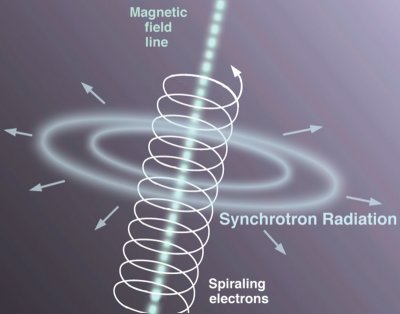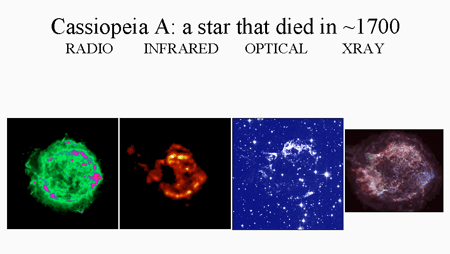|
Supernova Remnants:
Supernova remnants - the remaining material after the explosion of a
high
mass star - are sources of synchrotron emission. When a particle is
accelerated in a magnetic field, the particle release high energy photons:

Supernova remnants will eventually disperse into the interstellar medium
after around 100,000 years. During this time, they can look very similar to HII
regions but will look very different in the radio spectrum. In addition, the
expanding material moves at around 10,000 km/s and can expand to a diameter of
about 100 parsecs.
Synchrotron sources like supernova remnants are best viewed in any wavelength
other than visible light. An example of this is Cassiopeia A, a supernova
remnant in the constellation Cassiopeia:

(Image
Credit)
The wavelength that best shows this region is the radio spectrum.
When using spectroscopy to image a supernova remnant, the prominent emission
line will be highly ionized Iron (Fe XXIV).
Back to Top
|

